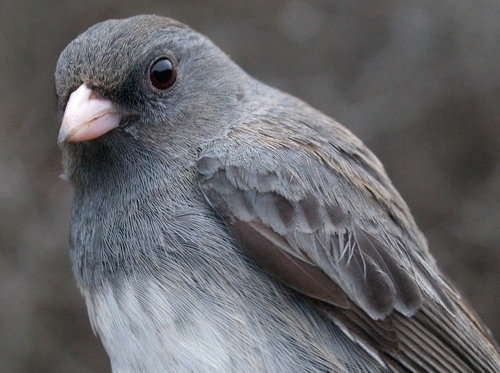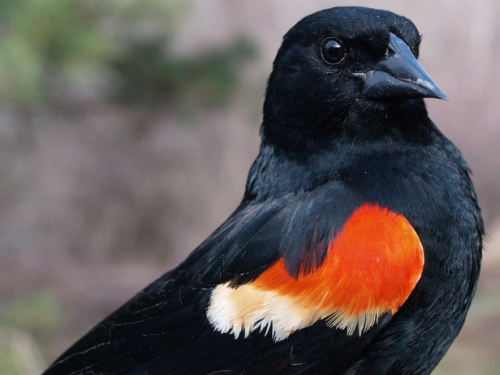|
|
THIS WEEK |
THIS SPRING |
2011 TOTAL |
SITE TOTAL |
|
# birds (and species) banded |
66 (15) |
155 (24) |
226 (28) |
31795 (107) |
|
# birds (and species) repeat |
12 (7) |
19 (8) |
27 (8) |
5534 (68) |
|
# birds (and species) return |
9 (6) |
22 (10) |
46 (10) |
853 (37) |
|
# species observed |
75 |
84 |
90 |
202 |
|
# net hours |
376.0 |
703.5 |
726.5 |
50343.6 |
|
# birds banded / 100 net hours |
17.6 |
22.0 |
31.1 |
63.1 |
|
|
Note: table does not include nocturnal banding (owls) |
Banders-in-charge: Simon Duval, Gay Gruner, Barbara Frei, Lance Laviolette
Intern: Matthew Von Bornhoft
Assistants: Christine Barrie, Chris Cloutier, David Davey, Rui De Jesus, Leah Den Besten, Sarah Dixon, Andrée-Anne Deschamps Leonard, Andrée Dubois-Laviolette, Rejean Duval, Liette Fortier, Lisa Keelty, Noemie Laplante, Meghan Laviolette, Lance Laviolette, Barbara MacDuff, Francine Marcoux, Betsy McFarlane, Christine Murphy, Greg Rand, Patricia Stotland, Elise Titman, Rodger Titman
Notes: It was a relatively quite week at MBO, which is not at all unusual for the end of April. While numbers banded remained modest, we did see a steady influx of species arriving for the first time this year, 18 in all: Virginia Rail, Eastern Kingbird, Blue-headed Vireo, Marsh Wren, House Wren, Hermit Thrush, Gray Catbird, Brown Thrasher, Nashville Warbler, Magnolia Warbler, Yellow Warbler, Yellow-rumped Warbler, Black-throated Green Warbler, Northern Waterthrush, Common Yellowthroat, Chipping Sparrow, White-crowned Sparrow, and Eastern Meadowlark. We also had four species banded for the first time this year (Sharp-shinned Hawk, only our third ever in spring out of a total of 41; Blue-headed Vireo; Yellow-rumped Warbler; Brown-headed Cowbird). Additionally there were four species providing new returns for 2011 (Downy Woodpecker, House Wren, Common Yellowthroat, and Brown-headed Cowbird); these are presumably all local breeders. The cowbird was a male banded on 22 May 2009 and missed last year. An even more interesting return was a male Red-winged Blackbird banded as an after-second-year bird on 14 May 2006, recaptured in late May 2008, and then again on 26 April this year.
Again this week two days were mostly lost to rain, and it wasn't until the final day that water levels finally dropped low enough for us to get net H1 into action for the first time this year. That day we also hosted 16 visitors from the Société d'Ornithologie de Lanaudière, who didn't get to see too much action in the nets, but contributed to the best diversity of the week, with 48 species observed that day. For many in the group, the highlight was observing a pair of Turkey Vultures that appear to be nesting at MBO this spring. A pair has been hanging out around the B/N nets for the past two weeks, and their behaviour suggests they may already have eggs. We are trying to ensure that disturbance in this area is minimized, to give them the best chance of nesting successfully - we would love to see some fledgling vultures later this spring or early in summer!
This week’s
top 10
#
individuals banded |
mean # individuals observed daily |
1. Slate-colored Junco (10) [1] |
1. Canada Goose (96) [1] |
2. American Tree Sparrow (9) [4] |
2. Red-winged Blackbird (45) [3] |
3. White-throated Sparrow (8) [7] |
3. Slate-colored Junco (26) [4] |
3. Red-winged Blackbird (8) [7] |
4. American Crow (25) [7] |
5. Ruby-crowned Kinglet (6) [-] |
5. White-throated Sparrow (16) [-] |
5. American Robin (6) [2] |
6. Black-capped Chickadee (16) [8] |
7. Yellow-rumped Warbler (4) [-] |
7. American Robin (13) [9] |
7. Fox Sparrow (4) [3] |
8. Tree Swallow (13) [-] |
9. Brown-headed Cowbird (3) [-] |
9. Song Sparrow (11) [-] |
10. Sharp-shinned Hawk (1) [-]
10. Yellow-shafted Flicker (1) [10]
10. Blue-headed Vireo (1) [-]
10. Black-capped Chickadee (1) [6]
10. Northern Cardinal (1) [10]
10. Swamp Sparrow (1) [-] |
10. Bohemian Waxwing (10) [2] |
|
In four of the past six years, Red-winged Blackbird has topped the list of birds banded, with only White-throated Sparrow (in 2008) and Ruby-crowned Kinglet (2009) interrupting that pattern of dominance, and those three species have on average been more than twice as numerous as any others. This year, Slate-colored Junco has been added to that list of exceptions, thanks to a delayed departure reminiscent of our experience in spring 2006. American Tree Sparrow in second place is even more indicative of the late spring, having never before appeared in our top ten this late in the season, let alone so close to the top of the list.On the other hand, this is the highest count of Yellow-rumped Warblers we've ever had so early in spring - so as is often the case, patterns are more complex than they may appear at first glance. Also of note, American Robins continued in good numbers this week, with the two-week total of 19 banded already more than we've ever had in any previous full spring season. Similarly, the two-week total of 16 Fox Sparrows is a record, albeit tied with 2010 at this point. Rounding out this week's list are a half dozen species with one individual each, reflecting that it was a rather quiet week of banding.
Canada Goose remained far in front of all other species observed this week, consistent with all previous years. Likewise, Red-winged Blackbird maintains its 7-year streak as runner-up during week 5. Just as the number of juncos banded is unusual for this late in spring, this is only the second time the species has been in the top ten of birds observed in week 5, again with 2006 being the only previous occurrence. Also reflecting the late spring in this chart is the continued presence of Bohemian Waxwings, although their numbers have tapered off substantially since last week. Otherwise the list generally reflects the usual spring migrants. Another species worth noting is Tree Swallow, which over 7 spring seasons has always had an average count during week 5 of between 12 and 16 individuals. With Tree Swallows and White-throated Sparrows arriving in good numbers this week and Song Sparrow rebounding into the top ten, they displaced Snow Goose, Ring-billed Gull, and Cedar Waxwing from last week's list.
|

One of the 33 Slate-colored Juncos banded at MBO so far this spring
(Photo by Simon Duval)

A male Red-winged Blackbird, a more traditional early spring bird at MBO.
(Photo by Simon Duval)
|



